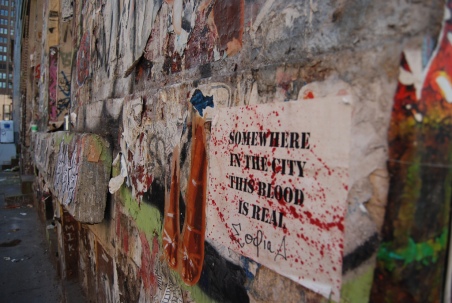
I recently finished This is Not a Test by Jose Luis Vilson. It resonated with me on several levels and got me thinking about my place as a teacher of underserved, inner-city youth.
I haven’t given the notion a lot of concentrated thought throughout my career – as the New York City Department of Education has a perverted way of distancing you from your core beliefs. The system is a monster. It’ll swallow you whole if you’re not careful.
Nevertheless, teaching at an urban school is a calling that has roots in my own childhood. Being born and raised in inner-city Cleveland, attending public schools, I can relate deeply to the daily grind of my students. Things like the reliance on public transportation, overbearing congestion anywhere you go, blaring sirens at all hours of the night, a single-parent household, gangs, bodegas, and the negative stereotype of inner-city youth were all a reality for me growing up. Interestingly, as a white male, I was the overwhelming minority in classrooms and in the neighborhood in which I lived growing up. Today, I still am.
This is not to say that I’ve been through everything that my students have, because I haven’t. My students face struggles that no teenager should ever have to deal with and are well beyond what I’ve experienced. But I do have a great deal of empathy and respect for their culture – our culture – and the circumstances that come along with it. I identify with them. It’s foundational to who I am as a man. And this helps me reach them through mathematics. As Vilson states:
“These are the variables that determine the type of teacher you become. And of course, the teacher you become is an extension of the person you are at that moment. It is also an extension of your own time as a student.”
This relationship I have with the urban lifestyle has been the backbone of my teaching since my preservice days. Thinking back, all of my peers in college preferred to teach in the suburbs. I get why. And I’m not judging anyone for their preferences. But it disturbed me, even as a 22-year-old, naive, no-nothing, that these aspiring educators readily dismissed this demographic of students because of the unique set of challenges associated with them. Did they not understand that these students needed them the most? Did they not understand that life-altering inequities persist because of these types of decisions? Indeed, they had their heart set on what they thought was the path of least resistance. Not ironically, it was around this time in my life that I decided who and where I wanted to serve as a teacher. I’ve never looked back.
What does this mean? It means that teaching at an urban public school that serves unscreened students from low-status neighborhoods is the most natural thing I can do as an educator. My entire teaching philosophy is centered on this fact. It drives where and how I teach. I’m responsible for recycling the gifts that I’ve been given back through the concrete jungle to students that desperately need them. Besides, it’s home.
Am I claiming the stereotypical white teacher role from movies that “saves” students from the inner-city? Hell no. The idea that inner-city kids need to be saved or fixed is ludicrous and makes me cringe. It only feeds the fire of negative generalities and is damaging for everyone involved. The passion I have for my students was born by experiencing the same demanding conditions that they live through every day. I also believe this demographic and their parents deserve teachers that are learners first, obsessed with getting better. They need someone that isn’t going to pass the buck. I claim nothing else.
Furthermore, being a white male, I’m keenly aware that my status as a role model at a school that is 91% Black and Latino is inherently limited. My positive influence is strong, but my students desperately need more teachers of color. That’s a troubling issue that I’ll save for another post.
bp

You might find Whistling Vivaldi an interesting read. It focuses on the impact that stereotypes have on one’s academic performance. The author is a professor at Stanford, but he started the work at University of Michigan. I haven’t finished it yet, but have found it incredibly thought provoking.
LikeLike
I will look into it, thanks!
LikeLike
I LOVE hearing this and connect to it very deeply. And the image is very powerful. I look forward to following this blog.
LikeLike
Thank you for sharing. One of the things I’m always considering in my writing is simply how complicated this work is. You want to keep doing great things but you realize you might also be part of the problem. Even as an educator of color, I know I still have lots of work to do as an educator for my students, who have similar experiences to me. That drives my conscience daily.
LikeLike
Thanks Jose. This work is incredibly humbling. There are many days when I leave feeling like I have less of a grip on things than I did the day before. This is heightened even more now at the end of the school year…when I realize so many of my approaches were off the mark this past year. Thanks again for the inspirational read and for spurring so many questions for me!
LikeLike